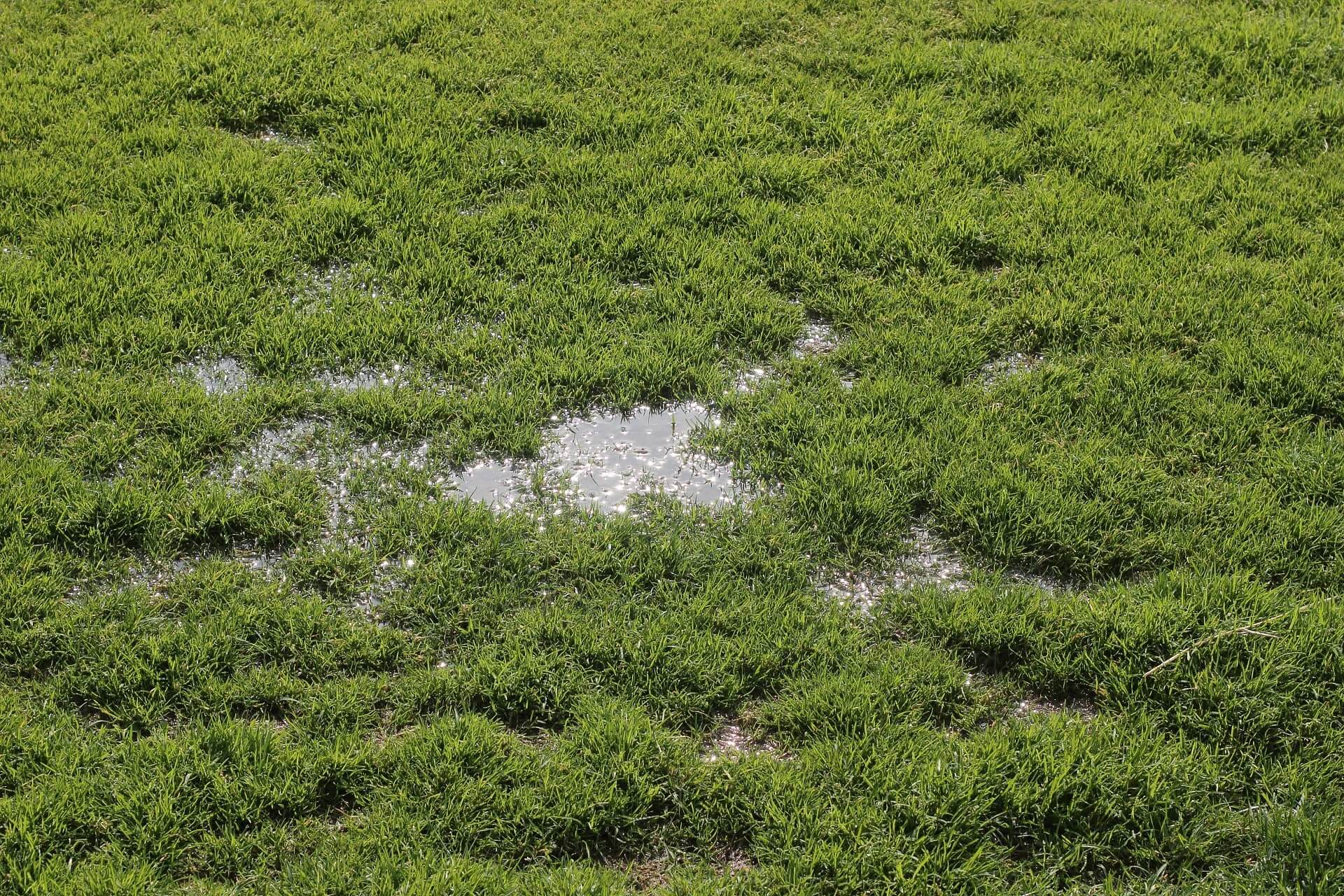
- Thu, Dec 2021
- |
- Moran’s Landscaping & Excavation LLC
If you are worried about your lawn and don’t know how to fix waterlogged soil, here is your place. Whether you don’t count on a well-drained system or the roots are saturated, a soggy lawn is one of the common problems that homeowners pass through.
Keep reading this blog to see what you can do on this issue and what steps to follow.
How to Fix Waterlogged Soil
As mentioned above, drainage problems can be the leading reason for a soggy lawn, and if you are those who overwater the soil, probably you indirectly waterlog the area.
Moreover, the lawn tends to be waterlogged in rainy seasons because the water is not well-drained. Also, if you know that there are in-ground pipes, you must pay attention to that because sometimes, damaged pipes filtrate a lot of water.
If you don’t act fast, your seeds and plants will not receive oxygen and die. Clay soil can also waterlog your lawn because they block the water flow.
Here are 5 Steps on How to Fix Waterlogged Soil:
- Install a French drain to handle excess water
- Improve yard slope to let water flow
- Aerate the lawn
- Install a sump pump
- Install a dry creek bed and build a rain garden
Install a French Drain to Handle Excess Water
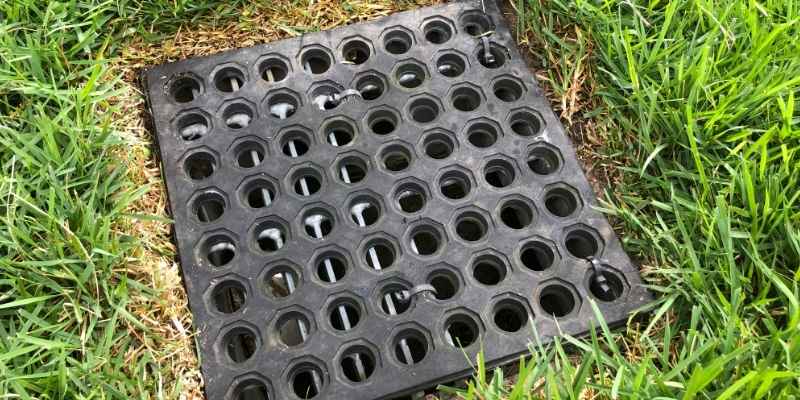
French drains are pretty famous and easy to install. They are hidden to the eye and do a heck of a job diverting excess water away from your landscape. This accessory will help you to improve your drainage system.
What is French Drain?
French drains are perforated pipes that go underground to channel rainwater and surface water away from your yard and house. The trench is covered with gravel or small rocks, making it a beautiful feature in your landscape.
The benefits of having a French drain are:
- Removes water surplus.
- Prevents soil erosion.
- Keeps your home foundations and basement dry.
- It increases the safety and usability of your yard.
- It makes your yard look appealing, neat, and healthy.
So, there you have it. Installing a French drain is the first way of how to fix a soggy yard. When rainwater is too much to handle for your soil, you can always trust the job to a French drain. It will safely reroute the water from wet areas, avoiding a muddy yard altogether.
Improve Yard Slope to Let Water Flow
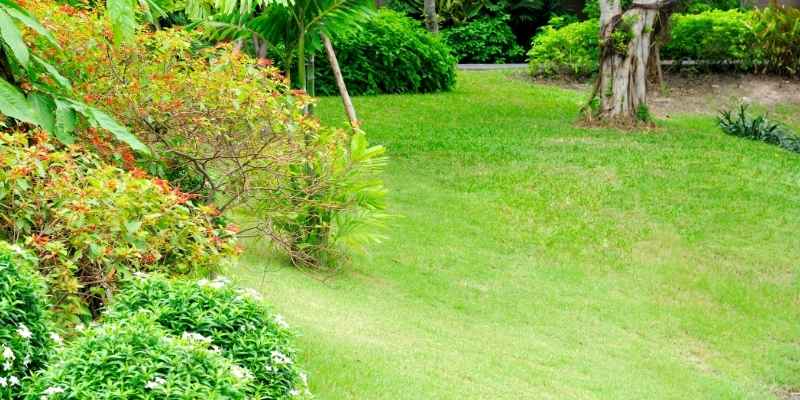
Another leading reason for a waterlogged lawn is unevenness in the ground, so the water accumulates in one specific place because it cannot flow correctly. But it’s all true. As you know, water flows by gravity, and a soggy lawn is most often the result of poor yard grading.
Thus, another effective way to fix waterlogged soil is to improve the yard slope. By doing so, you’ll prevent your yard from flooding and from having permanent puddles and muddy ground.
If your yard has less than a 3 percent slope, or it has some lower areas in the middle that are ideal for standing water, the chances are that a significant amount of rainwater will be unable to flow away from your landscape.
So, you need help from a landscaping/excavating contractor to do good landscape grading work.
In this way, you’ll make sure the lawn slopes away from your house, avoiding water pools near the foundations or leakage into your basement.
Grading will create a gentle slope to avoid pondering water, discouraging mosquito growth. And that means that your family won’t need to fight pesky mosquitoes.
Also, since there won’t be muddy areas, your loved ones won’t be exposed to slips and accidents when walking, playing, or using your lawn. Last but not least, your lawn will be healthier, and your property will look more attractive overall.
Aerate the Lawn
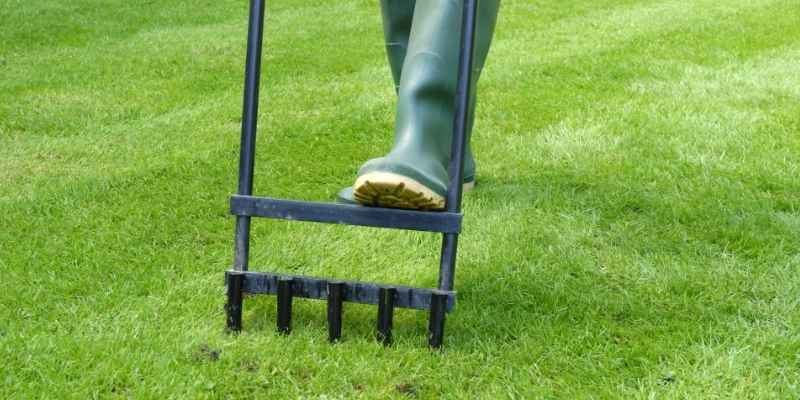
Sometimes having compacted soil is another common reason for a waterlogged lawn. A reliable step to fix your soggy lawn is to aerate to improve the water drainage. Maybe you are watering your plants, but the water accumulates above. When the soil is compacted, plant roots are compressed, so the water never reaches the roots.
When stagnant water is above the soil, the nutrients and air do not enter. You can aerate your lawn
using a garden fork, a spike, and a plug aerator. Usually, these tools make holes from 8 to 20 cm, allowing access to water.
Moreover, you can also have a soggy lawn with dry soil because the water cannot flow correctly. By aerating, you can prevent this issue.
Benefits of Aerating Your Lawn
- Reduces compaction
- Allows water flow and access to oxygen
- Builds a thicker lawn
- Avoid waterlogged lawn
- Improves soil resiliency
- Helps in the exchange between the internal roots and the outer atmosphere.
Install a Sump Pump to Protect Your Foundation
If you feel you have exhausted all your solutions and don’t know how to fix a soggy yard, you can install a sump pump. We have mentioned throughout this article how important it’s to have a dry yard for the stability of your home foundation.
Well, the reason to install a sump pump is to protect your house’s basement. We know that standing water near your home base means trouble, big-time trouble. Whether you have a basement or not, you have to make sure that water doesn’t leak underneath your house’s foundation.
One effective drainage solution is to install a sump pump. This device consists of a collection tank and a sump pump. It collects water that could leak into your foundation, and when the tank is filled with water, the pump turns on and pushes the water out from your house.
Install a Dry Creek Bed and Build a Rain Garden
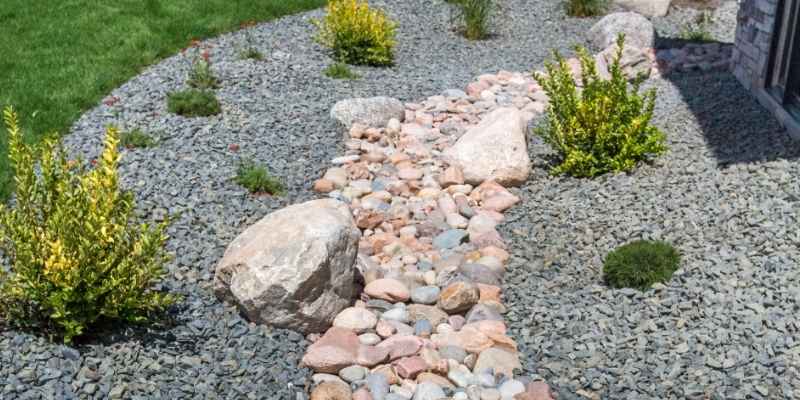
Another solution to deal with waterlogged soil is to install a dry creek bed and build a rain garden. While the rain garden collects and filters the excess rain or clogged water, the dry creek bed collects and drags the water before reaching other parts of the house.
Additionally, the dry creek bed is lined up with stones and helps avoid a poor drainage system because one of its main jobs is to prevent erosion by reducing runoff. It channels water away from your home toward a low spot.
Moreover, if you build a rain garden, you will prepare the soil for heavy rains, and it helps to clean the water. Also, it will help to avoid flooding and potential pests.
Both are cost-effective but crucial for avoiding waterlogged soil. One significant aspect is that either the rain garden or the dry creek bed can enhance the appearance of your landscape.
Need Assistance
If you need assistance on how to fix waterlogged soil, at Moran’s Landscaping & Excavation LLC, we count on the latest techniques and tools for homeowners.
Contact Us!
